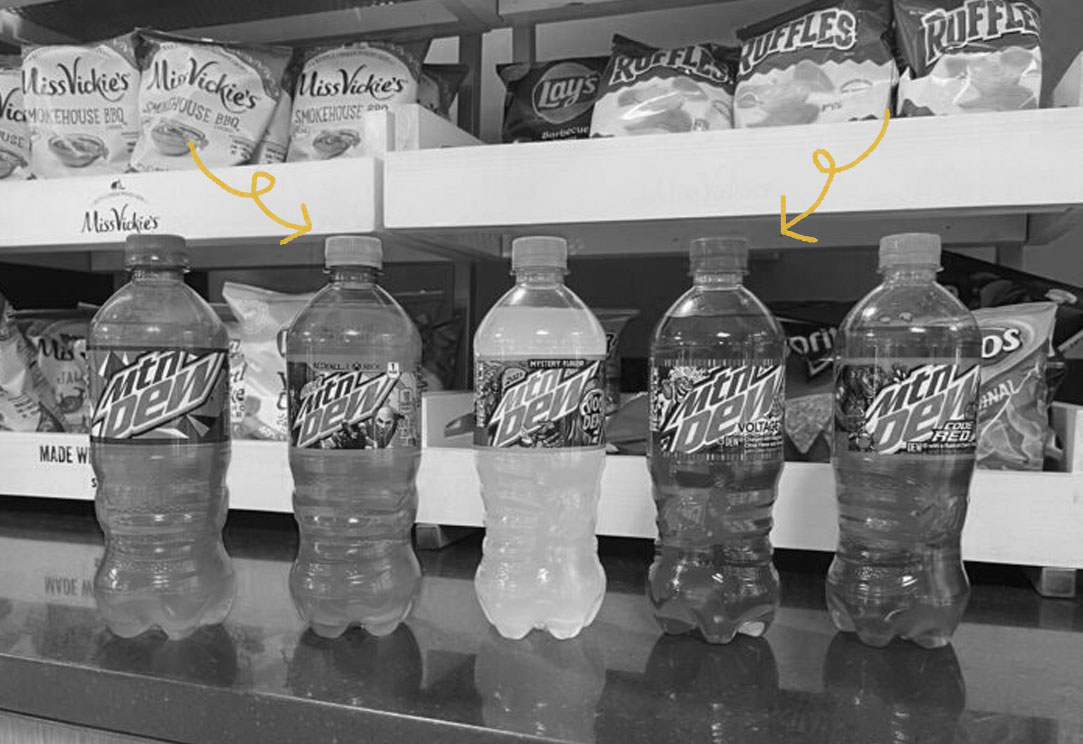Mountain Dew began in Knoxville, Tennessee sometime in the 1930s or 1940s. It was created by brothers Barney and Ally Hartman as a mixer to make whiskey taste better. The brothers reportedly made it because their favorite bourbon mixer, a lemon-lime drink called Natural Set-Up, wasn’t available when they moved to Tennessee. They named their beverage Mountain Dew because the term was once used as a nickname for moonshine and the brothers thought their drink tasted just like it when mixed with liquor. They even put a Tennessee moonshiner on their logo and marketed their beverage as a "zero-proof hillbilly moonshine.” While the brothers were able to expand distribution beyond Knoxville, sales stalled and the company struggled after Barney sadly died of a heart attack. Notably, the original version of Mountain Dew that the brothers created didn’t contain any caffeine, wasn’t neon-colored, and had a lemon-lime flavor that was similar to 7UP or Sprite. The formula wasn’t updated until after the drink was sold to the Tip Corporation of Marion, Virginia. Some claim that it was Bill Jones of the Tip Corporation who started tweaking the formula to make the flavor tangier and more citrus-forward, while others claim the new formula was the brainchild of Tri-City Beverages plant manager, Bill Bridgeforth, who reportedly started adding his Tri-City Lemonade to Mountain Dew bottles. Caffeine was also added while the beverage was being retooled from a mixer to a stand-alone soda and Mountain Dew morphed into the neon-colored, caffeinated, highly tangy drink we are familiar with today. In 1964, Pepsi bought the brand and continued using “hillbilly” and Prohibitionist marketing images in hopes of capitalizing on the hit TV show, The Beverly Hillbillies. Over time, Pepsi shifted the marketing for Mountain Dew towards thrill-seeking young people and even shortened the drink’s name on bottles and cans to simply read: Mtn Dew. The brand also began releasing a colorful range of flavors available for consumers to purchase at the store and later began adding exclusive flavors available only at fast-food joints like Taco Bell and KFC, too. Today, the highly sugary, caffeinated, neon-colored soda is a favorite of many and is considered one of the biggest names in the soda aisle.

Your go-to guide for weird history facts
Subscribe to the FREE daily email that makes learning about history fun.


